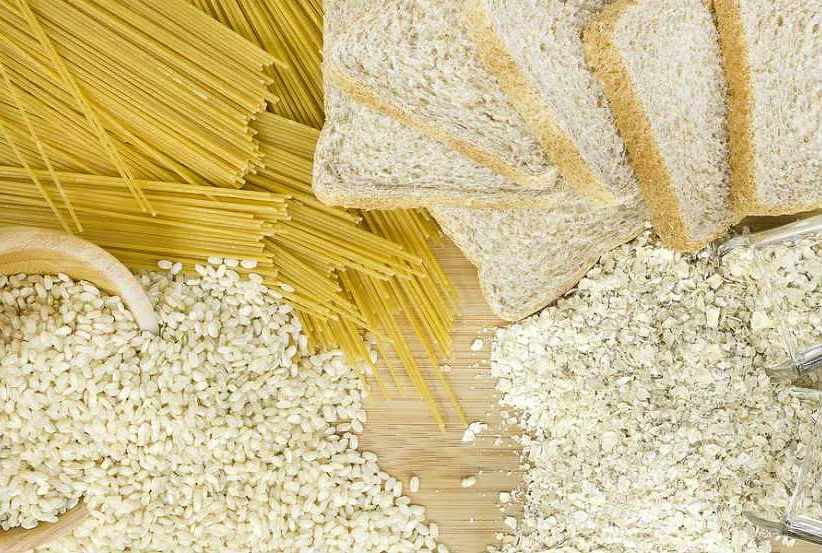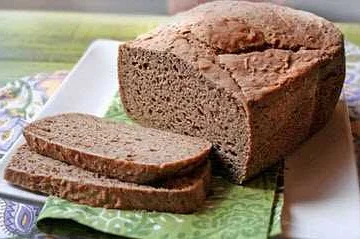Glycemic index of bread and bread products: definition and comparison
Содержимое
Learn about the glycemic index of bread and bread products, including how it is defined and how different types of bread compare. Discover which types of bread may have a lower glycemic index and could be a better choice for managing blood sugar levels.
Bread and bread products are staple foods in many cultures around the world, providing a significant source of carbohydrates in our diet. However, not all bread products are created equal when it comes to their impact on blood sugar levels. The glycemic index (GI) is a measure of how quickly a particular food raises blood sugar levels after consumption. Understanding the GI of bread and bread products can help individuals make informed choices about their carbohydrate intake and manage conditions such as diabetes and obesity.
The GI of bread is determined by the type of flour used, the processing techniques, and the addition of other ingredients such as sugar or fat. Bread made from refined white flour generally has a higher GI compared to bread made from whole grain flours, as the refining process removes the outer bran and germ layers, which contain fiber and slow down digestion. This results in a rapid rise in blood sugar levels after consumption. On the other hand, bread made from whole grain flours retains these fiber-rich layers, which can help regulate blood sugar levels and provide a more sustained release of energy.
When comparing different bread products, it is important to consider not only the GI but also the serving size and the overall nutritional composition. For example, a small serving of high-GI bread may have a lower impact on blood sugar levels compared to a larger serving of low-GI bread. Additionally, other factors such as the presence of fiber, protein, and fat can also influence the rate of digestion and absorption of carbohydrates, further affecting blood sugar response.
Overall, understanding the glycemic index of bread and bread products can be a useful tool in managing blood sugar levels and making healthy dietary choices. Incorporating whole grain breads with a lower GI into your diet, along with a balanced intake of other nutrients, can help promote stable blood sugar levels, provide sustained energy, and support overall health and well-being.
What is Glycemic Index?

The glycemic index (GI) is a measure of how quickly a carbohydrate-containing food raises blood glucose levels after consumption. It ranks foods on a scale of 0 to 100 based on their effect on blood sugar levels. Foods with a high GI are digested and absorbed quickly, causing a rapid spike in blood sugar levels, while foods with a low GI are digested and absorbed more slowly, resulting in a more gradual and sustained rise in blood sugar levels.
The GI is an important factor to consider for individuals with diabetes, as it can help guide food choices and meal planning to better manage blood sugar levels. Foods with a low GI are generally recommended for people with diabetes, as they provide a slower and more steady release of glucose into the bloodstream.
There are several factors that influence the GI of a food, including the type of carbohydrate, the amount of fiber, the cooking method, and the presence of fat or protein. Generally, foods that are more processed and refined tend to have a higher GI, while whole foods and those with a higher fiber content have a lower GI.
It is important to note that the glycemic index should not be the sole factor considered when making food choices. Other factors such as portion size, overall nutrient content, and individual tolerance to certain foods should also be taken into account.
- Foods with a high glycemic index (above 70) include white bread, white rice, and sugary snacks.
- Foods with a medium glycemic index (between 56 and 69) include whole wheat bread, oatmeal, and brown rice.
- Foods with a low glycemic index (below 55) include most fruits and vegetables, legumes, and whole grains.
By understanding the glycemic index of different foods, individuals can make informed choices to help manage their blood sugar levels and overall health.
Understanding Glycemic Index of Bread
When it comes to managing blood sugar levels, it’s important to understand the glycemic index of different foods. The glycemic index (GI) is a measure of how quickly a food raises blood sugar levels after it is consumed. Foods with a high GI can cause a rapid spike in blood sugar levels, while foods with a low GI are digested more slowly and have a gentler impact on blood sugar levels.
When it comes to bread, the glycemic index can vary depending on various factors such as the type of grain used, the processing method, and the addition of other ingredients. Generally, bread made from refined white flour tends to have a higher GI compared to bread made from whole grains.
Whole grain breads, such as whole wheat, rye, or sprouted grain breads, are considered to have a lower GI because they contain more fiber and nutrients compared to refined white bread. The fiber in whole grain bread slows down the digestion process, resulting in a slower and more steady release of glucose into the bloodstream.
In addition to the type of grain used, the processing method also plays a role in the glycemic index of bread. Breads made with finely ground flour have a higher GI compared to breads made with coarsely ground flour. This is because finely ground flour is digested more quickly, leading to a faster rise in blood sugar levels.
It’s also worth noting that the addition of fat, protein, and fiber-rich ingredients to bread can further lower its GI. For example, adding nuts, seeds, or spreading avocado or nut butter on bread can help slow down the digestion process and result in a lower GI.
Overall, understanding the glycemic index of bread can help individuals make informed choices about their carbohydrate intake and blood sugar management. Opting for whole grain breads and those with a lower GI can be beneficial for individuals looking to control their blood sugar levels.
Glycemic Index of Different Types of Bread

Bread is a staple food in many cultures and is consumed in various forms around the world. It is made from different ingredients and with different methods, resulting in a wide range of bread varieties. The glycemic index (GI) is a measure of how quickly a carbohydrate-containing food raises blood sugar levels. A high GI indicates a rapid increase in blood sugar levels, while a low GI indicates a slower and more gradual increase.
When it comes to bread, the GI can vary depending on factors such as the type of flour used, the presence of added sugar or sweeteners, and the processing methods used. Here is a comparison of the glycemic index of different types of bread:
- White bread: White bread typically has a high GI, ranging from 70 to 85. This is because it is made from refined wheat flour, which has been stripped of its bran and germ, resulting in a product that is quickly digested and absorbed by the body.
- Whole wheat bread: Whole wheat bread, made from whole grain flour, has a lower GI compared to white bread. Its GI ranges from 50 to 70, depending on the brand and recipe. The presence of the bran and germ in whole wheat bread slows down the digestion and absorption of carbohydrates.
- Multigrain bread: Multigrain bread is made from a mixture of different grains, such as wheat, rye, oats, and barley. The GI of multigrain bread can vary depending on the specific grains used and the proportions. Generally, multigrain bread has a similar GI to whole wheat bread.
- Rye bread: Rye bread has a lower GI compared to white bread and even whole wheat bread. Its GI ranges from 45 to 55. Rye flour contains a higher proportion of soluble fiber, which slows down the digestion and absorption of carbohydrates.
- Pumpernickel bread: Pumpernickel bread is a type of rye bread that is made from coarsely ground whole rye berries. It has a very low GI, ranging from 30 to 50. The coarse texture and high fiber content of pumpernickel bread contribute to its lower GI.
It’s important to note that while the glycemic index provides valuable information about how bread affects blood sugar levels, it’s not the only factor to consider when choosing bread. Other factors such as fiber content, nutrient composition, and overall diet play a role in determining the healthfulness of bread choices.
In conclusion, the glycemic index of bread can vary depending on the type of bread and its ingredients. Incorporating lower GI bread options, such as whole wheat, multigrain, rye, and pumpernickel bread, can be a good strategy for managing blood sugar levels and promoting overall health.
Glycemic Index of Bread Products

The glycemic index (GI) is a scale that measures how quickly a food raises blood sugar levels. It is especially important for people with diabetes, as foods with a high GI can cause a rapid increase in blood sugar levels, while foods with a low GI cause a slower, more controlled increase.
When it comes to bread products, the GI can vary greatly depending on various factors such as the type of grain used, the processing method, and the presence of added ingredients. Generally, bread made from refined grains tends to have a higher GI compared to bread made from whole grains.
Whole grain bread, such as whole wheat or whole rye bread, usually has a lower GI than white bread. This is because whole grains contain all parts of the grain, including the bran, germ, and endosperm, which help slow down the digestion and absorption of carbohydrates.
In addition to the type of grain, the GI of bread products can also be influenced by the presence of added ingredients such as sugar, fats, and fiber. For example, bread with added sugar or fats may have a higher GI compared to bread without these additives.
It’s worth noting that the GI of bread products can vary among individuals, as it depends on factors such as the person’s metabolism and the presence of other foods consumed at the same time. Therefore, it’s important for individuals to monitor their own blood sugar levels and choose bread products that best fit their dietary needs.
In conclusion, the glycemic index of bread products can vary depending on factors such as the type of grain, processing method, and added ingredients. Choosing bread made from whole grains and without added sugars or fats can help individuals maintain stable blood sugar levels. However, it’s important for individuals to monitor their own response to different bread products and make choices that best suit their own dietary needs.